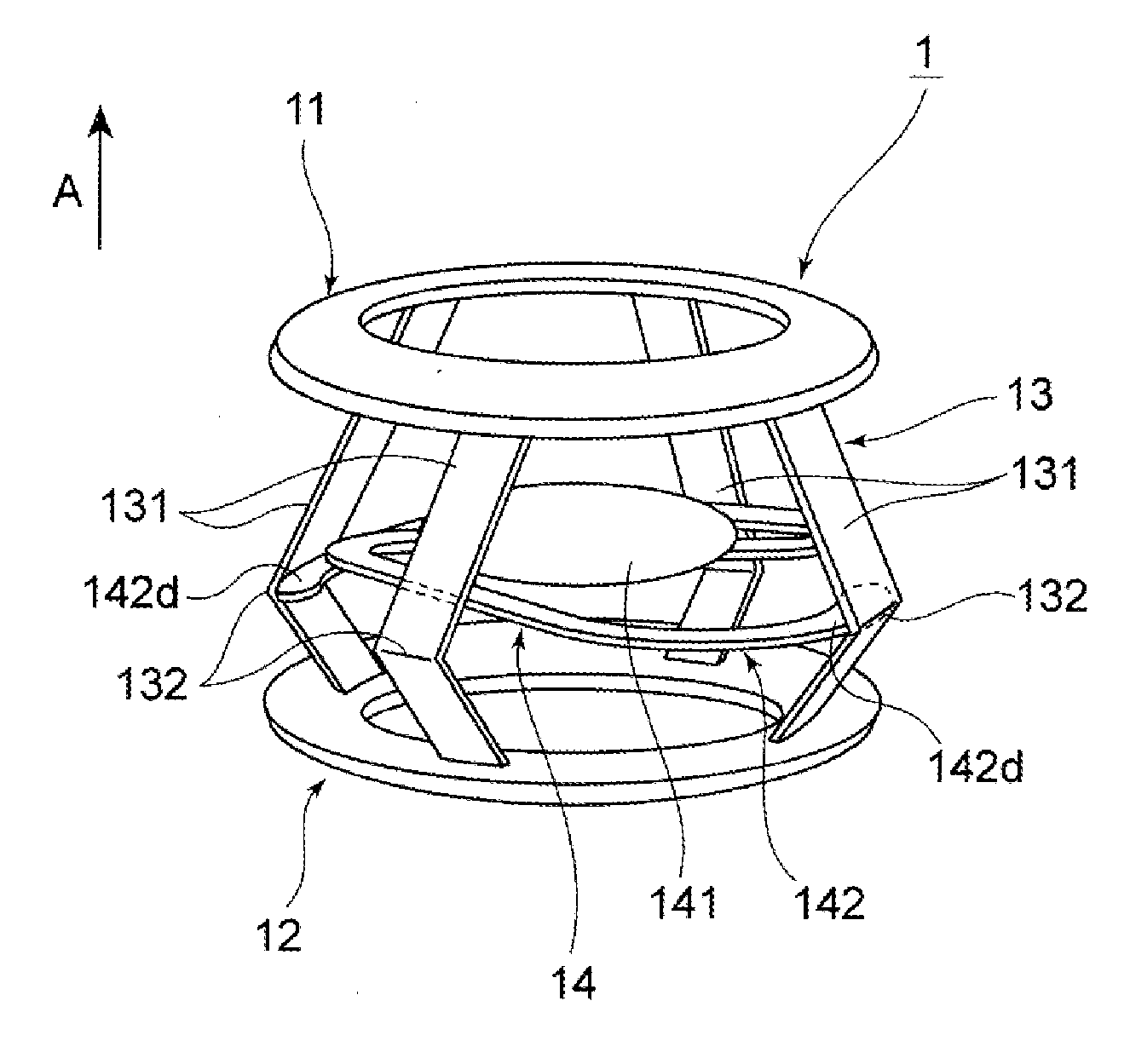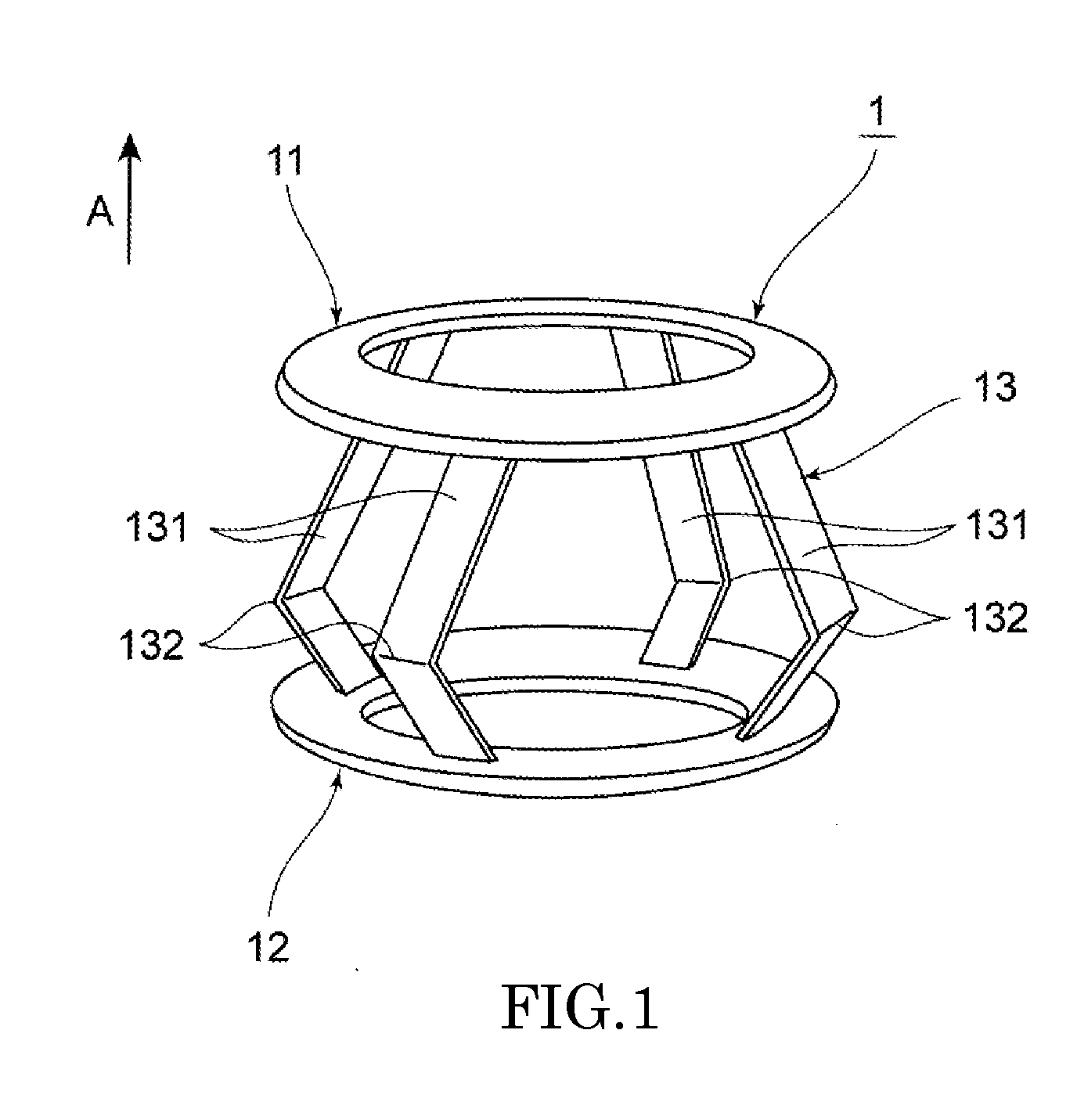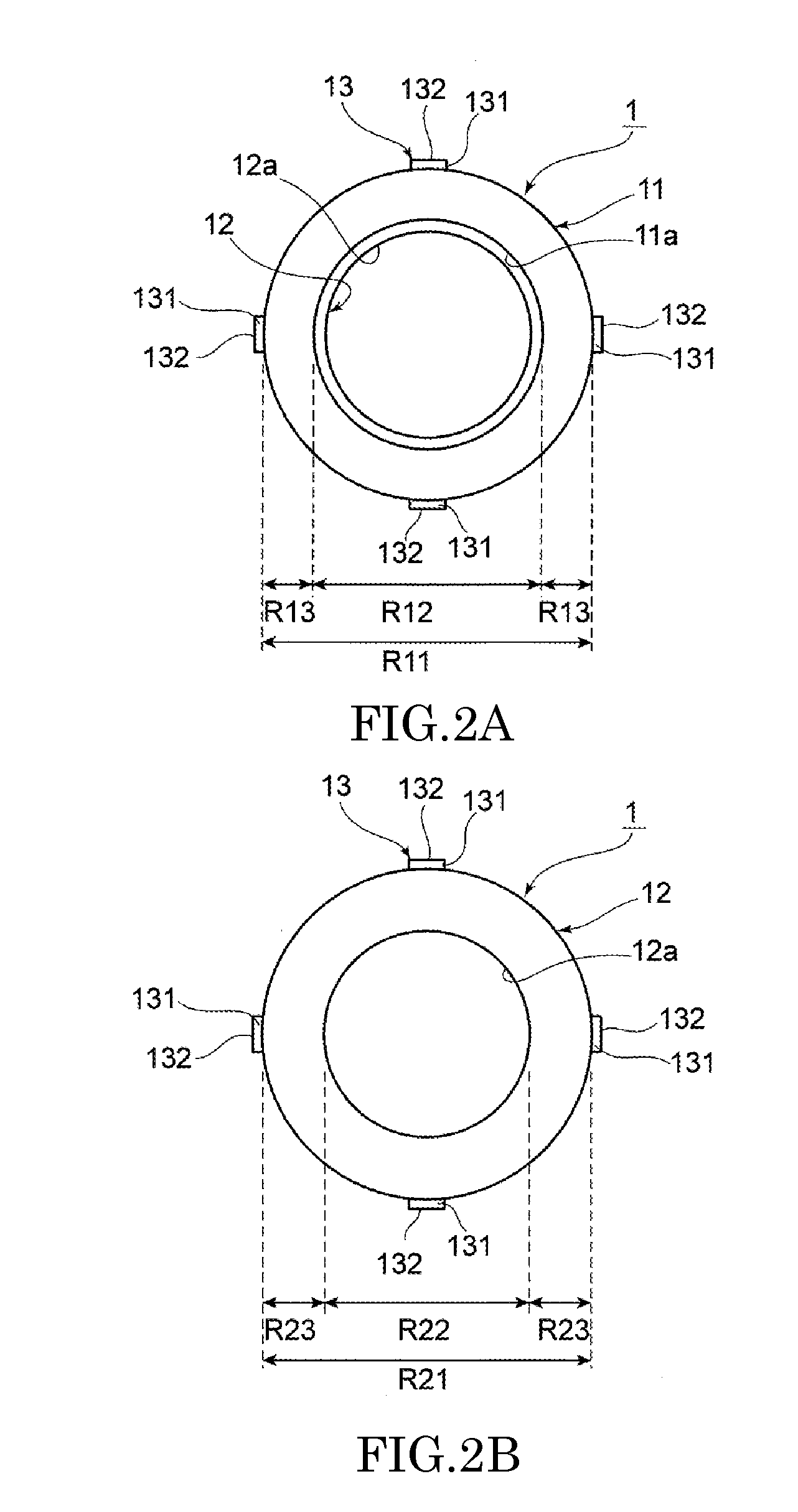Lenticular capsule-expanding device
a technology of expanding device and lenticular capsule, which is applied in the field of lenticular capsule expansion device, can solve the problems of insufficient eyesight, loss of force, and difficulty in thickness change of crystalline lens l, and achieve the effect of effective adjustment function of intraocular lens, high degree of accuracy, and effective exertion of intraocular lens adjustment function
- Summary
- Abstract
- Description
- Claims
- Application Information
AI Technical Summary
Benefits of technology
Problems solved by technology
Method used
Image
Examples
first embodiment
[0066]Next, a lenticular capsule-expanding device (hereinafter may be simply referred to as “the present device”) and an intraocular lens (hereinafter may be simply referred to as “the present lens”) to be arranged inside the present device according to the present disclosure will be explained with reference to FIGS. 1 to 7. The following explanation will be made, assuming that the arrow direction A shown in figures denotes a direction toward a “front” side and the opposite direction denotes a direction toward a “rear / back” side.
Structure of Device
[0067]As shown in FIGS. 1 to 7, the present device 1 is configured to be arranged in a lens capsule S in which the anterior capsule Sf was cut in a surgery such as a cataract surgery, etc. The present device 1 is, as shown in FIG. 1, equipped with a front supporting section 11 to be positioned at a front side in the lens capsule S, a rear supporting section 12 to be positioned at a rear side in the lens capsule S, and a connecting section ...
second embodiment
[0123]Next, a second embodiment of a lenticular capsule-expanding device according to the present disclosure will be explained with reference to FIGS. 8A and 8B. Hereinafter, the following explanation will be directed to the structure different from that of the aforementioned embodiment, and the explanation of the same structure will be omitted by allotting the same reference numeral or symbol.
[0124]In the present device 2 according to this embodiment, the connecting section 13 is difference in thickness and width at the front side and the rear side with respect to the bending portion 132.
[0125]For example, in the connecting section 13, as shown in FIG. 8A, the thickness Df of the front side portion of the connecting member 231 arranged on the front side of the bending portion 132 is made thinner than the thickness Db of the rear side portion of the connecting member 231 arranged on the rear side of the bending portion 132.
[0126]Further, in the present device 2′ according to a modif...
third embodiment
[0128]Next, a third embodiment of a lenticular capsule-expanding device according to the present disclosure will be explained with reference to FIGS. 9A to 9C. Hereinafter, the following explanation will be directed to the structure different from that of the aforementioned embodiments, and the explanation of the same structure will be omitted by allotting the same reference numeral or symbol.
[0129]In the present device 3 according to this embodiment, as shown in FIG. 9A, the connecting section 13 is provided with an engaging portion 15a for engaging the arm section 142 of the present lens 14 on the inner side of the bending portion 132. Concretely, this engaging portion 15a is protruded radially inward from the slightly rearward portion of the inner side of the bending portion 132, and is an elastic member having a tip end curved forward in an arc-shaped manner. With this structure, by forcibly inserting the tip end portion 142c of the arm section 142 into between the tip end porti...
PUM
 Login to View More
Login to View More Abstract
Description
Claims
Application Information
 Login to View More
Login to View More - R&D
- Intellectual Property
- Life Sciences
- Materials
- Tech Scout
- Unparalleled Data Quality
- Higher Quality Content
- 60% Fewer Hallucinations
Browse by: Latest US Patents, China's latest patents, Technical Efficacy Thesaurus, Application Domain, Technology Topic, Popular Technical Reports.
© 2025 PatSnap. All rights reserved.Legal|Privacy policy|Modern Slavery Act Transparency Statement|Sitemap|About US| Contact US: help@patsnap.com



